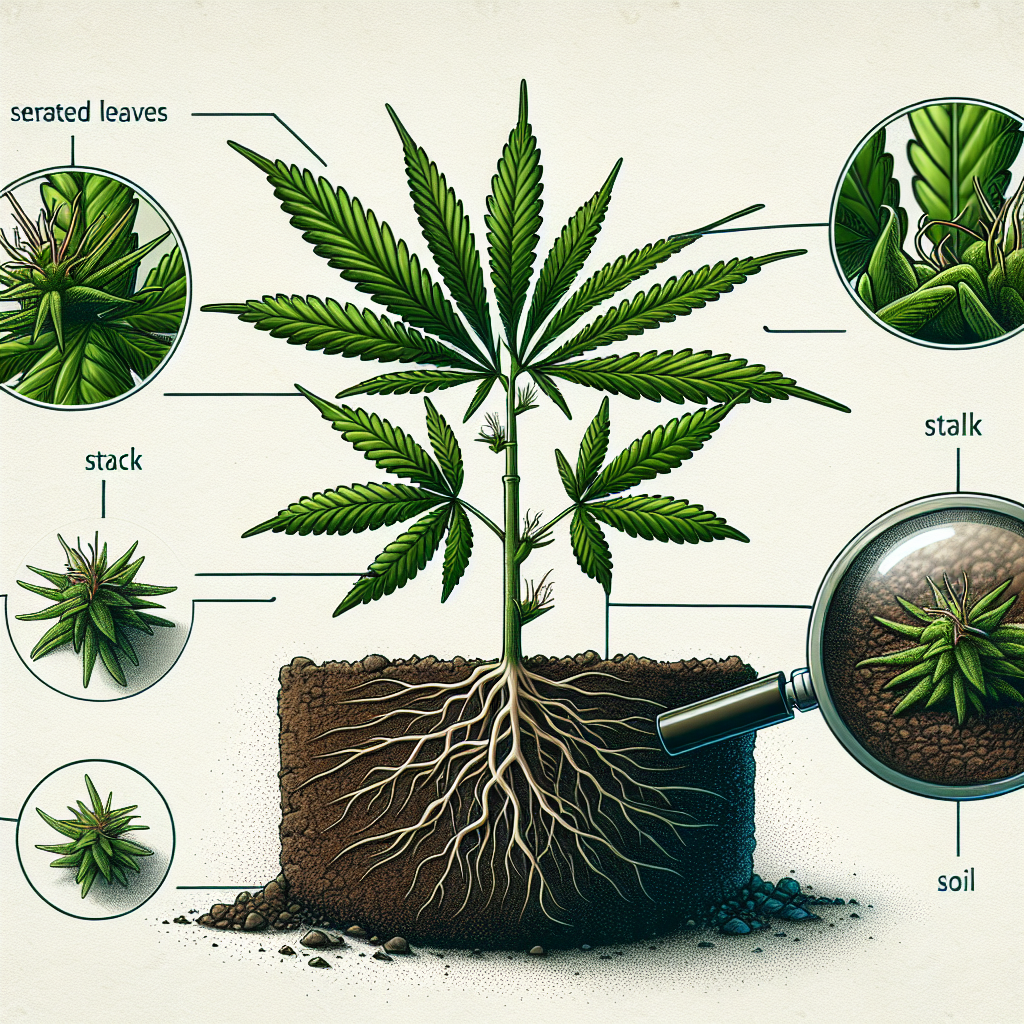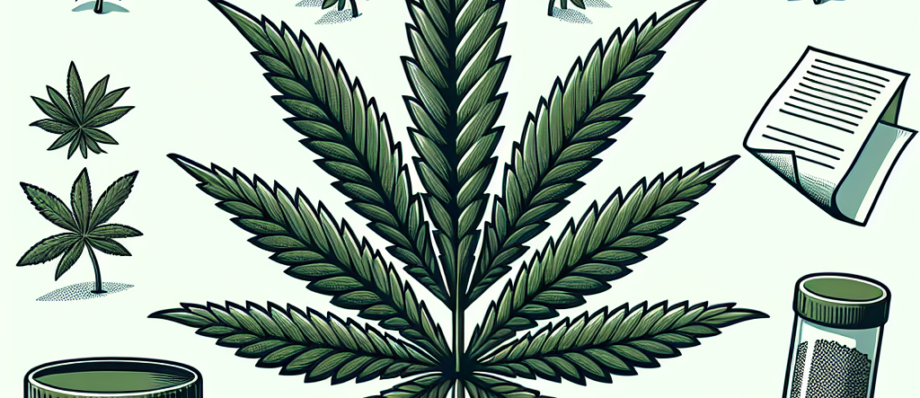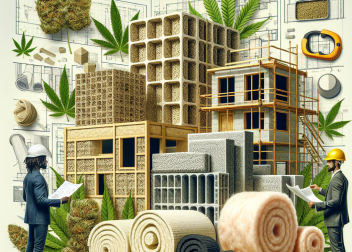What is Cannabis
“Unlock the natural power of Cannabis for a world of wellness and possibilities.”
Introduction
Cannabis, also known as marijuana, is a psychoactive drug derived from the Cannabis plant. It is commonly used for recreational and medicinal purposes due to its effects on the central nervous system. Cannabis contains various chemical compounds, including tetrahydrocannabinol (THC) and cannabidiol (CBD), which interact with receptors in the brain and body to produce different effects. The plant can be consumed through smoking, vaporizing, or ingesting its extracts, and it has been a subject of ongoing debate regarding its legality and potential health benefits.
The Basics of Cannabis: Understanding THC and CBD
Cannabis is a plant that has been used for various purposes for centuries. It has gained popularity in recent years due to its potential medical benefits and the growing acceptance of its recreational use. However, before delving into the world of Cannabis, it is essential to understand its basics, particularly the two main components that give it its unique properties: THC and CBD.
THC, short for delta-9-tetrahydrocannabinol, is the primary psychoactive compound found in Cannabis. It is responsible for the “high” or euphoric feeling that users experience when consuming marijuana. THC interacts with specific receptors in the brain, altering the release of neurotransmitters and producing its psychoactive effects. This compound is what recreational users seek when looking for a mind-altering experience.
On the other hand, CBD, or cannabidiol, is a non-psychoactive compound found in Cannabis. Unlike THC, CBD does not produce a high. Instead, it is believed to have various therapeutic properties, making it a popular choice for medical use. CBD interacts with different receptors in the body, including those associated with pain, inflammation, and anxiety. It is often used to alleviate symptoms of conditions such as epilepsy, chronic pain, and anxiety disorders.
While THC and CBD are the most well-known compounds in Cannabis, the plant contains over 100 other cannabinoids, each with its unique properties and potential benefits. These cannabinoids work together in what is known as the entourage effect, enhancing each other’s effects and providing a more comprehensive range of therapeutic benefits.
The ratio of THC to CBD in a Cannabis strain determines its overall effects. Strains with higher THC content are more likely to produce a potent high, while those with higher CBD content are often associated with more calming and relaxing effects. This distinction is crucial for both recreational and medical users, as it allows them to choose strains that suit their desired experience or symptom relief.
It is worth noting that the legal status of Cannabis varies from country to country and even within different states or regions. While some places have legalized both recreational and medical use, others still consider it illegal. Therefore, it is essential to familiarize oneself with the local laws and regulations before using or possessing Cannabis.
In recent years, there has been a surge in research surrounding Cannabis and its potential benefits. Scientists are studying its effects on various conditions, including chronic pain, epilepsy, multiple sclerosis, and even cancer. While more research is needed to fully understand the plant’s potential, early studies have shown promising results, leading to increased interest and support for further exploration.
As the understanding and acceptance of Cannabis continue to grow, so does the demand for safe and regulated products. This has led to the development of legal markets where consumers can access Cannabis products that have undergone rigorous testing for quality and safety. These markets offer a wide range of options, including dried flower, oils, edibles, and topicals, allowing users to choose the method of consumption that best suits their preferences and needs.
In conclusion, Cannabis is a complex plant with various compounds, the most well-known being THC and CBD. While THC produces a psychoactive high, CBD offers potential therapeutic benefits without the intoxicating effects. Understanding the basics of Cannabis, including its components and their effects, is crucial for both recreational and medical users. As research continues to shed light on its potential benefits, the demand for safe and regulated Cannabis products is on the rise.
Exploring the Effects of Delta-THC in Cannabis

Cannabis is a plant that has been used for various purposes for centuries. It has gained popularity not only for its recreational use but also for its potential medicinal benefits. One of the key components of Cannabis that is responsible for its effects is Delta-THC, or delta-tetrahydrocannabinol.
Delta-THC is a psychoactive compound found in Cannabis that interacts with the brain’s receptors, producing a range of effects. When consumed, it can induce feelings of relaxation, euphoria, and altered perception. These effects can vary depending on the strain of Cannabis and the individual’s tolerance and sensitivity to Delta-THC.
One of the most well-known effects of Delta-THC is its ability to stimulate appetite, often referred to as the “munchies.” This effect has been particularly beneficial for individuals undergoing chemotherapy or suffering from conditions that cause a loss of appetite. Delta-THC can help increase food intake and alleviate weight loss, improving the overall well-being of patients.
In addition to its appetite-stimulating properties, Delta-THC has also shown potential in managing chronic pain. It can interact with the body’s endocannabinoid system, which plays a crucial role in regulating pain perception. By binding to specific receptors in the brain and spinal cord, delta-thc can help reduce pain and improve the quality of life for individuals suffering from conditions such as arthritis or multiple sclerosis.
Furthermore, Delta-THC has been found to have anti-inflammatory properties. Inflammation is a natural response of the body to injury or infection, but chronic inflammation can lead to various health issues. Delta-THC can help modulate the immune response, reducing inflammation and potentially providing relief for conditions like Crohn’s disease or rheumatoid arthritis.
While delta-thc has many potential benefits, it is important to note that its use also comes with some potential risks. The psychoactive effects of delta-thc can impair cognitive function and coordination, making activities such as driving or operating machinery dangerous. It can also have adverse effects on mental health, particularly in individuals predisposed to conditions like anxiety or schizophrenia.
Moreover, the long-term effects of Delta-THC use are still being studied. Some research suggests that heavy and prolonged use of Cannabis with high levels of Delta-THC may be associated with an increased risk of developing mental health disorders or cognitive impairments. However, more research is needed to fully understand the potential risks and benefits of Delta-THC.
In recent years, there has been a growing interest in exploring the potential therapeutic applications of Cannabis and its components, including delta-thc. Medical Cannabis programs have been established in many countries and states, allowing patients to access Cannabis-based treatments under medical supervision.
In conclusion, Delta-THC is a key component of Cannabis that produces a range of effects when consumed. It has shown potential in stimulating appetite, managing chronic pain, and reducing inflammation. However, its use also comes with potential risks, particularly in terms of impaired cognitive function and mental health. As research continues, a better understanding of delta-thc and its effects will help guide its safe and responsible use for both medical and recreational purposes.
Comparing the Methods: Smoking vs. Eating Cannabis
Cannabis has been used for various purposes for centuries. It contains chemical compounds called cannabinoids, which have psychoactive effects when consumed. These cannabinoids interact with the body’s endocannabinoid system, producing a range of effects such as relaxation, euphoria, and pain relief.
One of the most common ways to consume Cannabis is by smoking it. This method involves inhaling the smoke produced by burning the dried flowers or leaves of the plant. Smoking Cannabis provides an almost immediate effect, as the cannabinoids are rapidly absorbed into the bloodstream through the lungs. Many people enjoy the ritual of rolling a joint or packing a pipe, finding it a social and relaxing experience.
However, smoking Cannabis does come with some downsides. The combustion process releases harmful toxins and carcinogens, which can be damaging to the lungs and respiratory system. Long-term smoking can lead to respiratory issues such as chronic bronchitis and lung cancer. Additionally, the smell of smoke can be off-putting to some people, making it less discreet than other methods of consumption.
An alternative method of consuming Cannabis is by eating it. This can be done by infusing Cannabis into food or beverages, such as brownies, cookies, or teas. Eating Cannabis, also known as edibles, provides a different experience compared to smoking. When ingested, the cannabinoids are metabolized by the liver and converted into a different compound called 11-hydroxy-thc. This compound has a more potent psychoactive effect and can take longer to kick in, typically ranging from 30 minutes to two hours.
One advantage of eating Cannabis is that it eliminates the harmful effects of smoking. There is no combustion involved, so there are no toxins or carcinogens released into the body. This makes it a healthier option for those concerned about their lung health. Additionally, the effects of edibles tend to last longer than smoking, providing a more sustained high.
However, there are some considerations to keep in mind when consuming edibles. The delayed onset of effects can lead to inexperienced users consuming more than intended, resulting in an overwhelming experience. It is crucial to start with a low dose and wait for the effects to kick in before consuming more. Furthermore, the potency of edibles can vary greatly, making it essential to know the dosage and potency of the product being consumed.
In conclusion, both smoking and eating Cannabis have their pros and cons. Smoking provides a quick and social experience, but it comes with the risk of harmful toxins and respiratory issues. On the other hand, eating Cannabis eliminates the harmful effects of smoking and offers a longer-lasting high, but it requires careful dosing and patience. Ultimately, the choice between smoking and eating Cannabis depends on personal preference and individual health considerations. Whether you prefer the traditional ritual of smoking or the discreet and healthier option of edibles, Cannabis consumption can be an enjoyable and therapeutic experience.
Q&A
1. What is Cannabis?
Cannabis is a psychoactive drug derived from the Cannabis plant, which is used for recreational and medicinal purposes.
2. What are the main components of Cannabis?
The main components of Cannabis are cannabinoids, such as THC (tetrahydrocannabinol) and CBD(cannabidiol), which are responsible for its psychoactive and medicinal effects.
3. What are the potential effects of using Cannabis?
The effects of Cannabis can vary depending on the strain and individual, but common effects include relaxation, euphoria, altered perception of time, increased appetite, and potential side effects such as anxiety or impaired coordination.
Conclusion
In conclusion, Cannabis is a psychoactive drug derived from the Cannabis plant. It contains various chemical compounds, including THC and CBD, which have different effects on the body. Cannabis is commonly used for recreational and medicinal purposes, but its legality and regulations vary across different countries and regions. Research on Cannabis is ongoing to better understand its potential benefits and risks.
![]()



